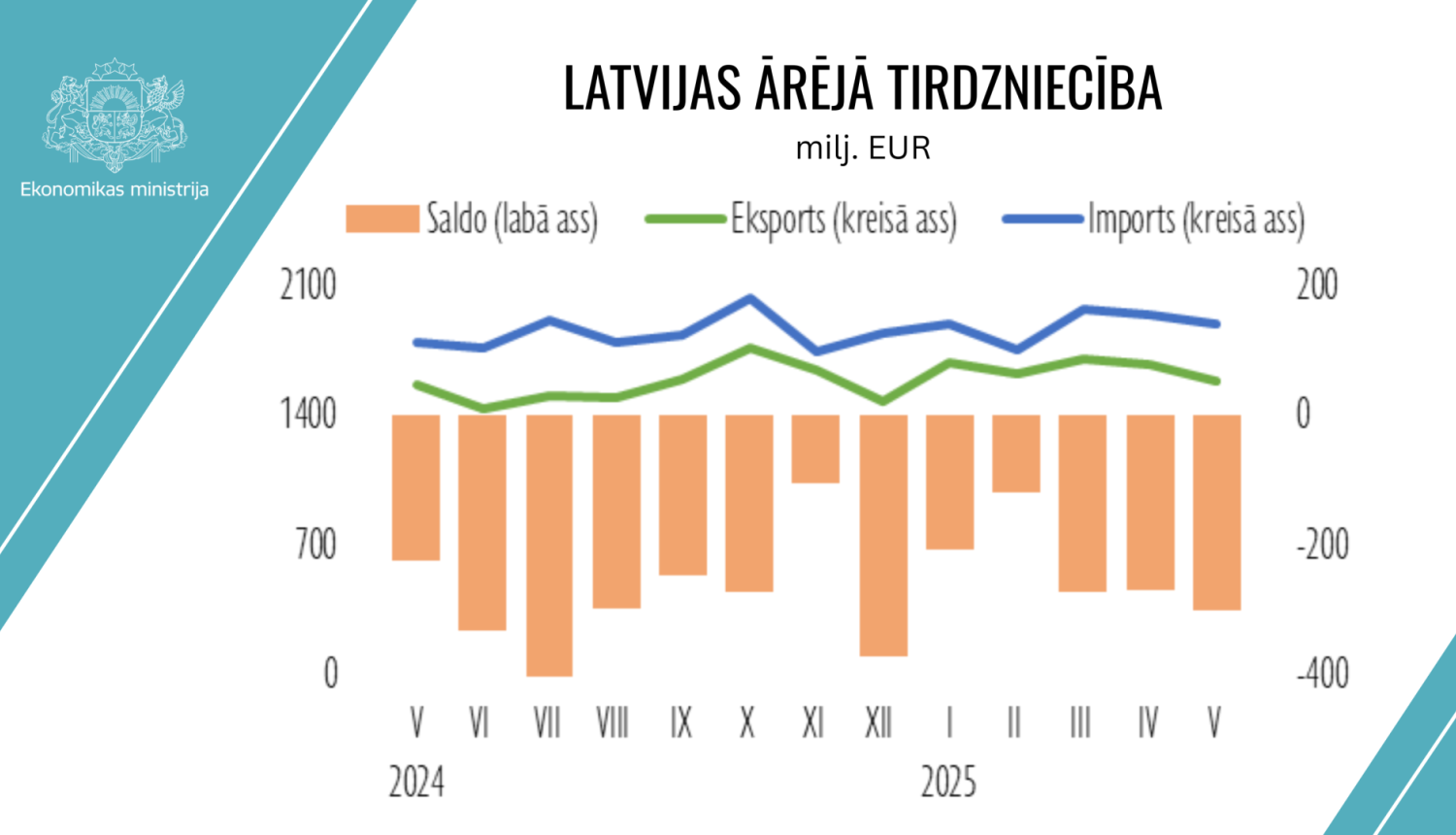Translated using ChatGPT service.
In May, the volume of goods exports continued to grow for the fifth consecutive month. Latvian entrepreneurs demonstrate the ability to adapt to volatile market conditions by successfully expanding their presence in foreign markets and increasing the total value of exported goods.
According to data from the Central Statistical Bureau, in May 2025, the value of both exports and imports of goods in actual prices increased year-on-year by 1.4% and 5.6%, respectively. The trade deficit in May on an annual basis was 8.6%.
The export value of mineral products continued to increase year-on-year. Exports of iron and steel, dairy products, cereals, and land transport vehicles also grew. However, the export value of wood and wood products, beverages, and organic chemical products declined.
In May of this year, compared to the same period last year, exports to EU countries decreased by 2.6%. Export value declined more sharply to Denmark (wood, animal and vegetable fats) and Estonia (machinery, wood), while it increased to the Netherlands (mineral products) and Italy (iron and steel).
Exports to CIS countries continued to shrink significantly – by 14.9%, including a 15.6% drop to Russia. A large share of exports to Russia still consists of beverages. Other exported goods include clothing, footwear, perfumes, and other items not subject to sanctions.
On the other hand, exports to other countries rose sharply – by 21.9%. Export value to some African countries increased notably for mineral products, while iron and steel exports grew significantly to Turkey.
In May year-on-year, the growth of imports was positively influenced by the increased import value of machinery and equipment, as well as mineral products. Meanwhile, imports of metals and food industry products declined.
Overall, in the first five months of 2025, goods exports in actual prices were 4.6% higher than a year earlier, while goods imports during this period grew by 8.1%.



